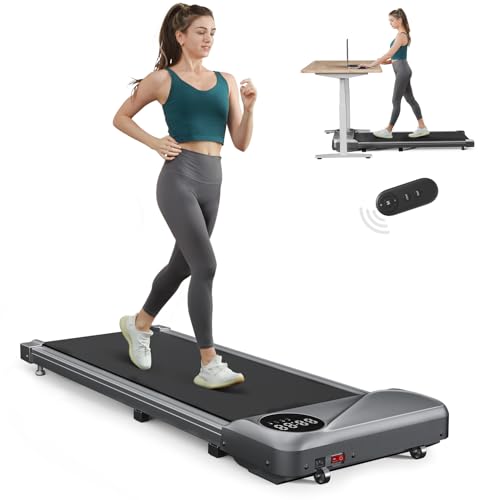The Essential Guide to Buying a New Treadmill: What You Need to Know
As physical fitness enthusiasts continue to seek flexible and effective ways to preserve their physical health, treadmills remain a staple in home and commercial health clubs alike. The technology and features of treadmills have actually advanced substantially in recent years, making now an outstanding time to think about purchasing a new treadmill. This post intends to assist possible purchasers through important aspects to think about, different types of treadmills offered, and frequently asked concerns to ensure they make an educated choice.
Understanding Treadmill Types
Before delving into particular brands, it's worth understanding the primary types of treadmills offered in the market. This introduction will help people figure out which type best fits their fitness requirements and budget.
1. Handbook Treadmills
- Description: These treadmills do not rely on electrical power and are powered exclusively by the user's motion.
- Pros:
- Generally less pricey.
- Compact and light-weight, making them easy to shop.
- Cons:
- Limited includes compared to motorized treadmills.
- Less ideal for high-intensity workouts.
2. Motorized Treadmills
- Description: These treadmills come geared up with electric motors that help with movement and enable for adjustable speed settings.
- Pros:
- Offer a wide variety of speed and incline options.
- Often equipped with innovative technology, including workout programs and heart rate screens.
- Cons:
- More expensive and need more maintenance.
- Much heavier, making them difficult to move.
3. Folding Treadmills
- Description: These treadmills can be folded for convenience, making them an outstanding option for those with limited space.
- Pros:
- Space-saving design.
- Still offers motorized options.
- Cons:
- May sacrifice some stability and resilience for portability.
4. Business Treadmills
- Description: Designed particularly for gyms and physical fitness centers, these treadmills are constructed with more long lasting materials.
- Pros:
- High-quality building and durability.
- Functions designed for intensive usage.
- Cons:
- Generally more pricey and larger in size.
Contrast Table of Treadmill Types
| Treadmill Type | Power Source | Key Features | Rate Range | Ideal For |
|---|---|---|---|---|
| Manual | None | Basic functionality | ₤ 100 - ₤ 500 | Beginners, budget plan users |
| Motorized | Electric | Adjustable speed/incline | ₤ 500 - ₤ 3,000 | All fitness levels |
| Folding | Electric | Space-saving features | ₤ 300 - ₤ 1,500 | Minimal area users |
| Business | Electric | Sturdiness and efficiency | ₤ 1,500 - ₤ 8,000 | Health clubs, heavy usage |
Secret Features to Look For
When acquiring a new treadmill, several crucial functions should be thought about:
- Motor Power (HP): A more powerful motor (a minimum of 2.5 HP) is essential for running and for users who prepare to utilize the treadmill frequently.
- Running Surface: Consider the size of the belt. Renaldo Landini and larger running surface can accommodate longer strides and offers much better security.
- Slope Options: Adjustable incline can include intensity to exercises and target various muscle groups.
- Exercise Programs: Many treadmills provide integrated workout programs that can guide users through different workouts and routines.
- Show Features: A clear screen enables users to track their speed, distance, calories burned, and heart rate more easily.
- Cushioning: Adequate shock absorption can decrease the risk of injury and provide a more comfortable running experience.
- Innovation Integration: Features like Bluetooth connection, mobile app integration, and integrated speakers can enhance the exercise experience.
Frequently Asked Questions (FAQs)
Q1: How much should I spending plan for a treadmill?
A: Budget can differ based on features and quality. Manual treadmills begin around ₤ 100, while motorized designs can range from ₤ 500 to ₤ 3,000, depending on sophisticated functions.
Q2: How frequently should I preserve my treadmill?
A: Regular maintenance, including lubing the belt and inspecting the motor, ought to be done monthly. Examine the treadmill for wear and tear often.
Q3: Can I lose weight with a treadmill?
A: Yes, regular use of the treadmill, combined with a healthy diet, can aid with weight-loss. Incorporating interval training increases intensity and calorie burn.
Q4: Is it much better to operate on a treadmill or outdoors?
A: Both have advantages. Treadmills offer a controlled environment and cushioning, while outdoor running deals diverse scenery and natural inclines.
Q5: Do I need unique shoes for using a treadmill?
A: While particular treadmill shoes aren't essential, wearing good-quality running shoes created for assistance, cushioning, and stability is suggested.
Investing in a new treadmill can significantly impact one's physical fitness journey, offering opportunities to exercise in your home despite weather. By understanding the types of treadmills readily available and thinking about important functions, people can choose a design that fits their lifestyle and fitness goals. Whether going for casual walks or extreme running sessions, the right treadmill can change workout routines, making them more satisfying and efficient. With the increase in innovation and ingenious styles, the treadmill stays a classic and important tool in individual physical fitness.

